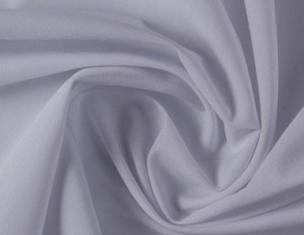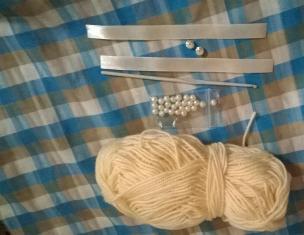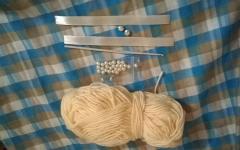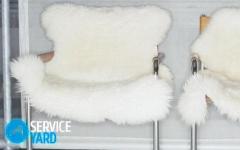A small description, I have already corrected it, since the knitting in the photo is slightly different, I will describe everything below in the note.
For 2-3 years:
You will need 4 skeins of yarn with a meter of 150/50g. Knitting needles No. 2.5 and No. 3.
Attention: each child has his own arm circumference, and each has his own knitting, so it is better to measure the circumference at the elbow (or wrist if you are planning a long sleeve) and already calculate the number of loops using your measurements so that in the middle of the sleeve there is a pattern of braids with 34 loops .
We cast on 58 loops with knitting needles No. 2.5 and knit 6 rows with a 1 on 1 elastic band. Next is the main knitting with needles No. 3. We knit 1 edge, 11 knits, pattern according to the pattern without edges, 11 knits, 1 edge.
We continue to knit, adding 1 loop on both sides in every 10 row (or every 3-4cm for long sleeve) until the sleeve width is about 27 cm (it should be equal to the armhole - 13.5 cm in my case). We get one sleeve.
Then, from the beginning of work, at a height of 21 cm (sleeve length), we cast on 65 loops (27 cm) on each side. We knit the cast-on loops on the front side with knit stitches, and on the wrong side with purl stitches. The edge loops that were on the sleeves are also knitted on the front side and on the back side. That. continue knitting 7-8 cm (shoulder width) up to the neckline. Just in case, you can tie a smaller shoulder so that the head can fit through. It will be easier to sew later than to bandage everything. Next, we divide the knitting in half into the back and front and knit them separately. The middle of the braid pattern will be the neckline. We knit about 19 cm - the width of the neck. We connect the back and front and continue knitting 7-8 cm to the trace of the sleeve. From one sleeve to the other, the height of the knitting should be equal to the width of the back and front, i.e., the circumference of the chest or hips, whichever is greater. For me it is 33 cm for a chest girth of 60. We knit the edge loops on the neck side from the front side with the wrong side, with the front side on the wrong side.
For the second sleeve, close off 65 stitches on each side and continue knitting the second sleeve, decreasing symmetrically to the first sleeve. Calculate where you ended up increasing on the first sleeve and knit the same number of rows, and then decrease 1 loop on each side. Finish the last 6 rows using knitting needles No. 2.5 with a 1-on-1 rib. Sew sleeves, back and front seams. Along the edge loops from the back and front, pick up the loops and knit with knitting needles No. 2.5 - 6 rows with a 1 on 1 elastic band.
Note: In the photo I have a braided pattern insert on the sides and along the sleeves. So, I just made a little mistake in casting on the stitches and when I knitted it, the blouse turned out to be a little small, too tight. It was a pity to unravel it and I decided to tie 7 rows of braid along the edge.
I hope it helps someone. I sketched out the pattern, I'm not much of an artist!



Age 5 years, height 112 cm. Semenovskaya Ivushka threads 50% cotton, 50% viscose 430 m per 100 grams. I knitted a sample of 40 loops for 40 rows, steamed and measured. The width of the sample is 13 cm, height 8 cm. Divide 40 by 13 and 8, and find how many loops and rows there are in 1 cm, respectively. I got PP=3, PR=5. Density on machine 4.
Back: cast on 90p, knit 8p, then openwork pattern No. 154 (I have a Brother KH 930E/KR850) I don’t know about punched cards... I’ll post a photo

Having knitted 82 rows in a straight line, close 3p, 2p, 2p, 1, p for the armhole. Having knitted 142r with openwork, close 16p for the neckline to the right, knit 2 more rows (total 144r) and close 21 shoulder loops. The other side is mirrored.
Before: cast on 46 sts, knit 8 rows and then knit in an openwork pattern. At 82 r close for armholes 3p, 2p, 2p, 1p. At the height of 120 rows, close for the neck 10p, 3p, 2p, 1p, 1p. At a height of 144r, close 21p of the shoulder.
Sleeve: Cast on 48p, knit 8p, start increasing with 10p, every 16 rows 9 times, 1p on both sides. It turns out: 10 rubles, 26 rubles, 42 rubles, 58 rubles, 74 rubles, 90 rubles, 106 rubles, 122 rubles, 138 rubles. In the 148th row, start decreasing for the 2 stitches on both sides, and then every 4 rows, 2 loops 5 times, then every 2 rows, 2 loops 5 times. Having knitted 180 rows, 12 rows before the end of the work I make a decrease using the partial knitting method to make the edge more rounded. I also continue to decrease 2 loops at a time (I throw them over with a decker) and on the opposite side I push 2 needles to the front non-working position (turning on the carriage partial knitting), I knit to the left, I wrap the thread around the last needle, I pull out 2 needles on the other side, I knit, I wrap, and again I pull out 2 more needles from the left. At a height of 192r we finish the sleeve.
I knitted facings for the front, neck and sleeves, and tied them on. Published
You will need:
yarn 50% wool, 50% acrylic, 250 m/100 g) - 400 g melange, knitting needles No. 3,5 and 4.
Rib 1x1: knit alternately 1 person. p., 1 p. p.
Pearl pattern: 1st row - alternately knit 1, purl 1. p., in each subsequent row, shift the pattern by 1 p.
Before:
On needles No. 3.5, cast on 90 stitches and knit 2 cm with a 1x1 elastic band. Switch to needles number 4 and knit next. way: 1 chrome, 8 p. pearl pattern, 10 p. according to pattern 1, 7 p. with a pearl pattern, 4 p. according to pattern 2, 7 p. with a pearl pattern, 16 p. according to pattern 3, 7 p. with a pearl pattern, 4 p. according to pattern 2, 7 p. pearl pattern, 10 p. according to pattern 4, 8 p. pearl pattern, 1 chrome.
At a height of 35 cm for the neckline, close off the middle 14 stitches and knit both sides separately. To round the neckline, bind off the inside 1 time with 3 stitches, 1 time with 2 stitches and 3 times with 1 stitch. At a height of 41 cm, bind off the remaining shoulder loops. Finish the second side in the same way.
Back:
Knit as before, only after 39 cm from the cast-on row, close 14 stitches for the neckline and knit both sides separately. To round the neckline, close from the inside 2 times x 3 sts and 1 time x 2 sts. Close the loops at the height of the front.
Sleeves:
On knitting needles No. 3.5, cast on 40 sts and knit 6 cm with an elastic band. In the last row, evenly add 8 stitches. Switch to needles No. 4 and knit the next stitch. way: 1 chrome, 7 p. with a pearl pattern, 4 p. according to pattern 2, 7 p. with a pearl pattern, 10 p. according to pattern 4, 7 p. with a pearl pattern, 4 p. according to pattern 2, 7 p. with a pearl pattern , 1 chrome. For bevels, add on both sides in every 5th row 10 times x 1 p. At a height of 30 cm, close all loops.
Sizes: 1/3/6/12 months.
You will need: 100/125/125/150 g gray-green yarn Bergere de France Cachemire (90% cashmere, 10% wool, 75 m/25 g); knitting needles No. 3.5, auxiliary knitting needle; 5 transparent buttons.
Garter stitch: knit. and out. r. - persons p.
Facial surface: faces. r. - persons p., out. r. -outside p.
Purl stitch: knit. r. - purl p., out. r. - persons p.
Braid A: width 6 sts. Knit according to the pattern, purlwise. r. knit according to the pattern. Repeat from 1st to 6th row.
Braid B: width 6 sts. Knit according to the pattern, purlwise. r. knit according to the pattern. Repeat from 1st to 6th row.
Fantasy pattern: width 22 sts. Knit according to the pattern, purlwise. r. knit according to the pattern. Repeat from 1st to 20th r.
Knitting density. Out. stitch: 23 p. and 32 r. = 10 x 10 cm. 6 p. oblique A + 22 p. fancy pattern + 6 p. oblique B = 11.5 cm.
Back : dial 55/59/63/71 p. Knit 4 p. garter stitch. Next knit purl. satin stitch In 14/16/18/21 cm = 46/52/58/68 r. from the cast-on edge for the armholes with close both sides 2 p. = 51/55/59/67 p. After 24/27/30/34 cm = 78/88/96/110 r. close from the cast-on edge to bevel the shoulders on both sides in every 2nd r. 1 x 5 p., 2 x 6 p./W x 6 p./1 x 6 p., 2 x 7 p./1 x 7 p., 2 x 8 p., simultaneously with 1st decrease for shoulders close off the middle 13/15/15/17 stitches for the neckline and then knit separately, closing 1 x 2 stitches along the edges of the neckline.
Left shelf: dial 47/50/53/59 p. Knit 4 p. garter stitch. Next knit purl. satin stitch In 14/16/18/21 cm = 46/52/58/68 r. from the cast-on edge close for the armhole 2 p.s. right side= 45/48/51/57 p. After 17/19/22/25 cm = 56/62/70/80 r. close from the cast-on edge to cut out the neckline on the left side in every 2nd r. 8 x 3 p., 2 x 2 p./6 x 3 p., 6 x 2 p./7 x 3 p., 5 x 2 p./8 x 3 p., 5 x 2 p. Bevel the shoulder on the right side, as on the back.
Right shelf: dial 47/50/53/59 p. Knit 3 p. garter stitch. In the next row, knit 11/12/12/13, add 1 st, k8, add 1 st, k4, add 1 st, k4, add 1 st, k8, add 1 p., 12/14/17/22 knits. = 52/55/58/64 p. Next knit: 10/11/11/12 p. satin stitch, 6 p. oblique A, 22 p. fancy pattern, 6 p. oblique B, 8/10/13/18 p. purl. satin stitch After 14/16/18/21 cm = 46/52/58/68 r. from the cast-on edge, close for the armhole 2 p. on the left side = 50/53/56/62 p. After 17/19/22/25 cm = 56/62/70/80 r. close from the cast-on edge to cut out the neckline on the right side in every 2nd r. 5 x 4 p., 3 x 3 p., 2 x 2 p./5 x 4 p., 1 x 3 p., 6 x 2 p./5 x 4 p., 2 x 3 p., 5 x 2 p./5 x 4 p., 3 x 3 p., 5 x 2 p. Bevel the shoulder on the left side, as on the back.
Sleeves: dial 40/43/45/48 p. Knit 4 p. garter stitch and knitting. satin stitch After 6 cm = 20 r. From the cast-on edge, continue purl. stitch, adding on both sides at a distance of 2 stitches from the edge in the 3rd row, then in every 14th row. 4 x 1 p./in every 12th p. 5 x 1 p./in every 12th r. 6 x 1 p./in every 12th r. 7 x 1 p. = 48/53/57/62 p. After 24/26/29/32 cm = 78/84/94/104 r. Place the loops from the cast-on edge.
Front and neckline strip: cast on 150/165/185/205 p. Knit 4 p. garter stitch and set stitches aside.
Assembly : sew shoulder seams. Sew the strip with a quilt stitch along the side of the left front, along the edge of the neckline and along the side of the right front. Sew the upper edges of the sleeves to the vertical part of the armhole using a quilt stitch. Sew the seams of the sleeves, 1.5 cm of seam along the bottom of the sleeves - along the faces. side. Sew side seams. Sew on 5 buttons (see location on the pattern).
I found a wonderful sweater for girls on a Chinese website for ready-made children's clothing that can be easily knitted. The main pattern is a wide braid, the bottom is trimmed with tied fringe. Moreover, you will have another sample of a pullover that a Chinese craftswoman has already knitted for her girl. The result is a chic item that is absolutely as beautiful as the factory one.
Sample braid of 9 loops.
 Cast on 17 stitches on the needles. Of these, I knit 2 rows as follows.
Cast on 17 stitches on the needles. Of these, I knit 2 rows as follows.
1st row: remove 1 edge (and so on in all rows), purl 3, knit 9, purl 3 and the last edge we knit purl (and so on in all rows)
Row 2: k1, k3, p9, k3, k1. In the third row, make the first cross.
3rd row: 1cr, purl 3, slip the next 3 loops onto an additional knitting needle and leave them “hanging” before work, knit the next 3 loops. Then return the 3 loops from the additional knitting needle to the left one and knit them. The crossover has been completed! We tie the remaining loops of the row 3 knit, 3 purl, edge.
4th row: 1 cr, 3 purl, 9 knit, 3 purl, 1 cr.
Row 5: k1, k3, p9, k3, k1.
6th row: 1 cr, 3 purl, 9 knit, 3 purl, 1 cr.
In the 7th row we make a second cross.
Row 7: 1cr, purl 3, knit 3, slip the next 3 stitches onto an additional needle and leave them “hanging” while working, and knit the next 3 loops. Then return the 3 loops from the additional needle to the left one and knit them. We tie the remaining loops of the row: 3 p, 1 edge.

8th row: 1 cr, 3 purl, 9 knit, 3 purl, 1 cr.
Row 9: k1, k3, p9, k3, k1.
10th row: 1 cr, 3 purl, 9 knit, 3 purl, 1 cr.
I hope that you understand that on the one hand you should always cross the loops before work, and on the other always after work.
Crosses can be performed at different heights. For example, if you do them in every 2nd row, the braid will turn out to be very plump and convex. And if the distance between the crosses is increased, the braid will have a more elongated appearance.

12 loop braid |
|
Row 1: Row 2 and all even rows: 3 knit stitches, 12 purl stitches, 3 knit stitches Rows 3 and 5: 3 purl loops, 12 knit stitches, 3 purl loops Row 6: 3 purl loops, transfer the next 4 loops to an additional knitting needle and place it on the front side of the work, knit the next 4 knit loops, then knit 4 knit loops from the auxiliary knitting needle, 4 knit loops, 3 purl loops. Rows 9 and 11: 3 purl loops, 12 knit loops, 3 purl loops Row 13: 3 purl loops, 4 knit loops, transfer the next 4 loops to an additional knitting needle and place it on the wrong side of the work, knit the next 4 knit loops, then knit 4 knit loops from the auxiliary knitting needle, 3 purl loops. Starting from the 15th row, repeat the pattern from the 3rd row. |


Braid pattern of 9 loops:


An empty cell in this diagram is front loop(knits in front rows, purl in purl rows).
On the sleeves there is 1x1 elastic, two braid motifs and stockinette stitch. 
Reductions for raglan can be connected according to this pattern.

All decreases are made from the front side of the product and in each row along each raglan line, starting 2 stitches in front of the marker: 2 stitches together, knit, next. Remove the loop as a front one, knit 1. n. pull through the removed loop.


How to trim the bottom with thread fringe.


The sweater from the Chinese blog has a slightly changed pattern. Between the braids, the craftswoman knitted strips of knit and purl stitches. So, in principle, it’s also beautiful, but I prefer the plaits on the front fabric. It’s a good idea to add a lace collar with pearls.








 For the sample, cast on 18 loops + 2 edge stitches
For the sample, cast on 18 loops + 2 edge stitches






